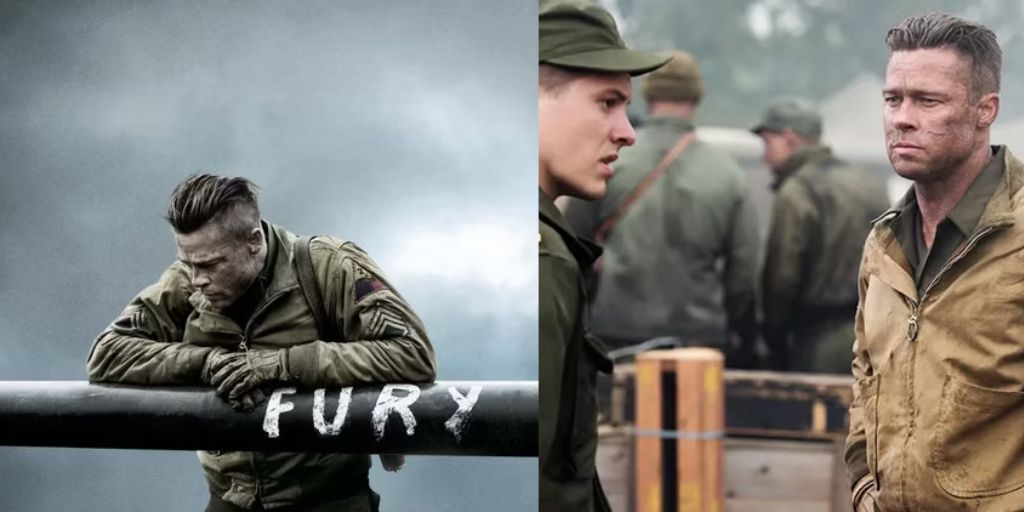It has been 10 years since David Ayer’s powerful World War II film, Fury, amazed audiences. The movie follows an American tank crew during the last weeks of the war in Nazi Germany.
Brad Pitt plays Don “Wardaddy” Collier, Logan Lerman is Norman “Machine” Ellison, and Shia LaBeouf stars as Boyd “Bible” Swan, along with Michael Peña and Jon Bernthal.
Fury is a memorable film that shows the brutal reality of war. Many people have wondered if this 2014 film is based on a true story. Although Fury is not based on any specific real-life events, it is inspired by the true horrors of World War II.
David Ayer, the director of Fury, comes from a family of World War II veterans. For him, it was very important to make Fury feel authentic. However, the film is not about a specific battle or historical event. Instead, it focuses on the overall combat experience.
“The event isn’t the star,” Ayer said in an interview with IndieWire in 2014. “The star is the behavior of the men in this horrible situation.” Ayer was influenced by Belton Y. Cooper’s book, Death Traps: The Survival of an American Armored Division in World War II.
This memoir describes Cooper’s own experiences as a tank crew member in Europe. While Death Traps was a key inspiration, Ayer used other sources as well.
For the tanks in Fury, Ayer used real military equipment. The Tank Museum in England lent the last working German Tiger Tank, known as Tiger 131, for the film.
The museum also provided a Sherman M4A2E8 tank, which was used as “Fury” in the movie, though it was actually a Sherman M4A3E8. The film’s attention to detail included using a replica of a British map from 1943 of Hanover, Germany.
War Daddy Was a Real Person, but Not Brad Pitt
People initially thought Fury was based on a true story because of Brad Pitt’s character, Don Collier, whose nickname is “Wardaddy.” In real life, “War Daddy” (spelled as two words) was Staff Sergeant Lafayette Pool, called the “Forgotten Tank Ace” in a 1998 issue of the Journal of Military Ordinance.
Pool was from Texas and joined the U.S. Army in 1941. He led an M-4 Sherman Tank, which he nicknamed “In the Mood.” Pool and his crew destroyed 258 enemy vehicles. His story resembles Pitt’s character, but their lives are quite different.
Pool was severely injured in combat, losing one of his legs. Unlike the film’s Wardaddy, Pool returned home safely to his family after the war. “He was discharged in June of 1946, and went home with an artificial leg, later to farm and run a gas station,” the Kleffmans wrote.

In 1948, he was called back to duty with other amputees due to their specialized skills. By 1952, Pool became a Warrant Officer. He later tried to sue Warner Bros. for copyright infringement, claiming their film The Tanks Are Coming copied his story. The court decided in favor of the studio. Pool lived until 1991, passing away peacefully in his sleep.
Even though Fury differs from the real-life events that inspired it, it effectively captures the harshness of war and the dangers of tank combat. “The most important thing for a tank commander to do is to keep his crew alive,” Pool once said to young tankers in 1986.
“The tank crews today have the technology to do what we had to do with our eyes and ears.” Fury vividly portrays the dangers of Nazi Germany, thanks to Ayer’s detailed directing and intense preparation of the cast, including sending them to Navy SEAL boot camp.
Compared to other World War II films like Saving Private Ryan or The Thin Red Line, Fury stands out. With strong performances, high production value, and a lasting impact, it is one of the best war films of the 21st century. While it is not based on a true story, it is deeply informed by history and is all the more powerful for it.
Fury is now available for streaming on Netflix in the U.S.




